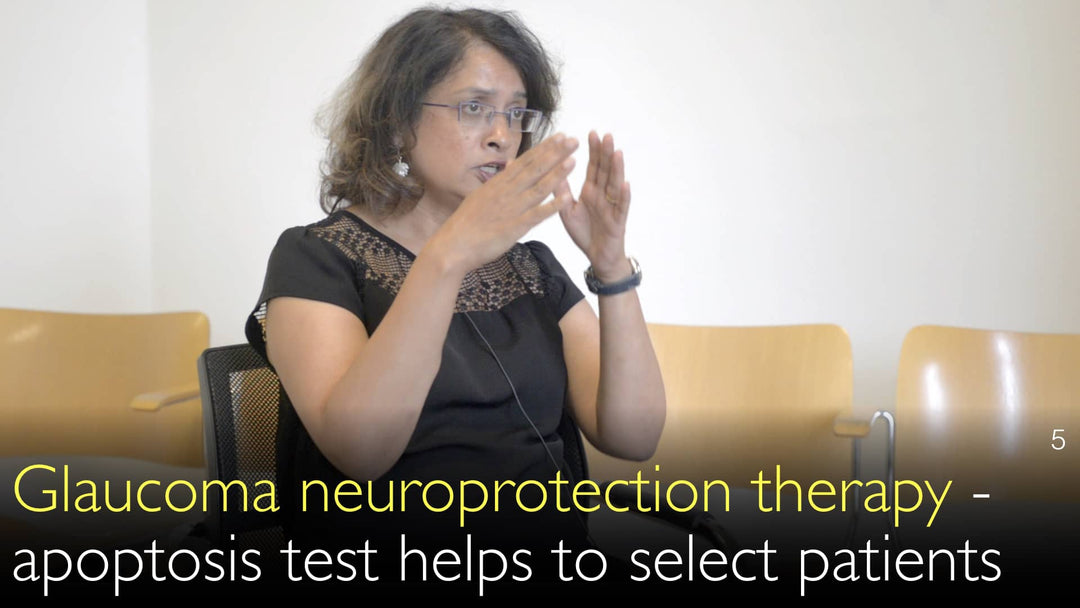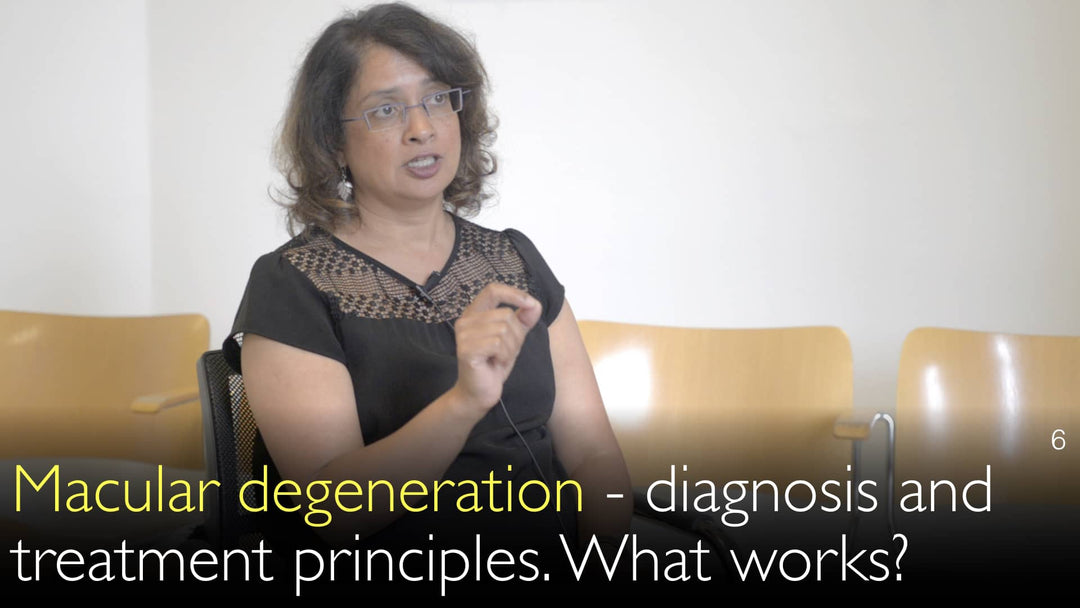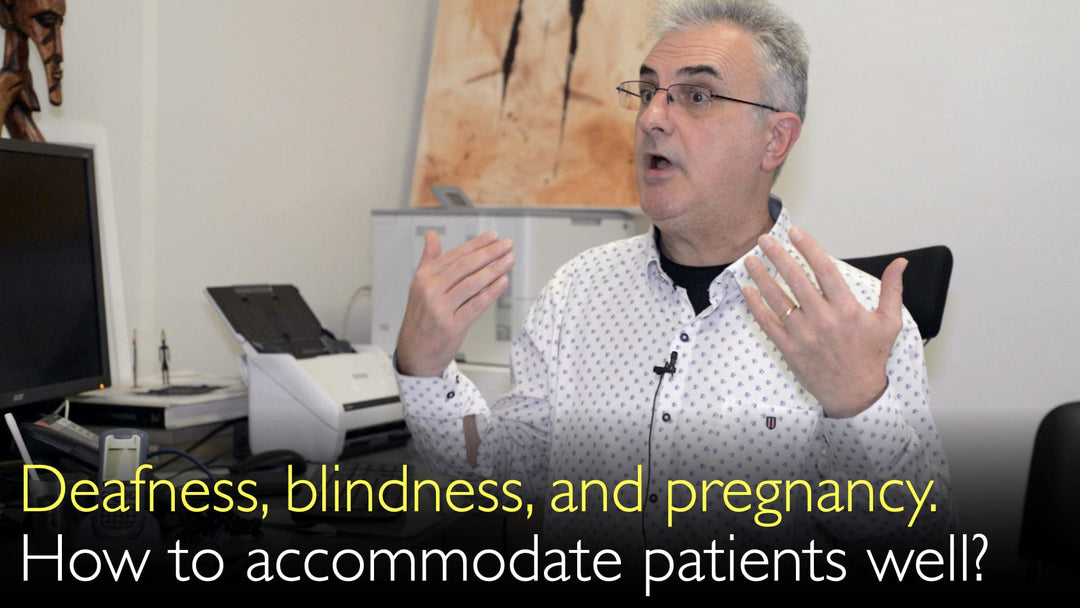Leading expert in glaucoma and neurodegeneration, Dr. Francesca Cordeiro, MD, explains how a new diagnostic test, Detection of Apoptosing Retinal Cells (DARC), uses Optical Coherence Tomography (OCT) to identify dying retinal nerve cells, enabling faster evaluation of neuroprotective drug candidates and potentially helping to select glaucoma patients who would benefit most from novel therapies that target the underlying neurodegeneration.
Neuroprotection in Glaucoma: New Diagnostic Test for Apoptosing Retinal Cells
Jump To Section
- Neuroprotection in Glaucoma Therapy
- Brimonidine Clinical Trial Insights
- Neuroprotective Agent Approval Status
- Improving Glaucoma Clinical Trials
- DARC Diagnostic Marker for Glaucoma
- The Future of Glaucoma Treatment
Neuroprotection in Glaucoma Therapy
New glaucoma therapy focuses on targeting the neurodegeneration of retinal nerve cells, a core pathological process in the disease. This approach aims to protect these cells from dying, which is the ultimate cause of vision loss in patients. Dr. Francesca Cordeiro, MD, emphasizes that this represents a significant shift from solely focusing on intraocular pressure reduction to directly addressing the cellular mechanisms of damage.
Brimonidine Clinical Trial Insights
A major randomized clinical trial investigated the neuroprotective potential of the medication Brimonidine (Alphagan). This large trial, led by clinicians in Chicago, compared Brimonidine, an alpha agonist, to the beta-blocker eye drops Timolol. The results showed significantly less visual field progression, or constriction of visual fields, in eyes treated with Brimonidine. However, Dr. Francesca Cordeiro, MD, notes a controversy arose due to the trial's design and a high patient dropout rate, casting doubt on whether it provided definitive proof of efficacy for neuroprotection.
Neuroprotective Agent Approval Status
Despite promising research, there is currently no medication approved specifically as a neuroprotective agent for glaucoma. Dr. Cordeiro points out that the patients who would benefit most are those already on standard glaucoma treatments who continue to lose vision. Many of these patients are likely already on a medication like Brimonidine for pressure control, further complicating the clinical picture. This highlights a critical unmet need in glaucoma care that new therapies aim to address.
Improving Glaucoma Clinical Trials
The ability to design and execute effective clinical trials for glaucoma neuroprotection has improved significantly. Dr. Francesca Cordeiro, MD, explains that advanced tools like Optical Coherence Tomography (OCT) and sophisticated visual field testing allow researchers to measure the rate of vision decline more accurately. These tools help determine if a patient is actually responding to a new treatment by providing objective data on disease progression, which is essential for proving a drug's effectiveness.
DARC Diagnostic Marker for Glaucoma
A groundbreaking new diagnostic marker for glaucoma is the Detection of Apoptosing Retinal Cells (DARC) technology. Dr. Cordeiro describes DARC as a method that uses OCT to identify apoptosis, or programmed cell death, in retinal ganglion cells. A clinical trial for DARC, conducted in her department, has completed its first phase, assessing its safety and tolerability. The goal is to determine if DARC can differentiate between active and stable glaucoma disease, as well as distinguish glaucoma patients from healthy individuals.
The Future of Glaucoma Treatment
The integration of novel biomarkers like DARC is poised to revolutionize glaucoma management. As Dr. Francesca Cordeiro, MD, discusses, this technology could enable clinicians to identify which patients have actively progressing disease and would therefore be ideal candidates for neuroprotective therapies. This moves treatment towards a more personalized approach, targeting the right patients with the right therapy at the right time, ultimately aiming to preserve vision more effectively than ever before.
Full Transcript
New glaucoma therapy targets neurodegeneration of retinal nerve cells. A new diagnostic test is Detection of Apoptosing Retinal Cells (DARC). It uses Optical Coherence Tomography (OCT) to find dying nerve cells in the eye. DARC helps to evaluate neuroprotection drug candidates faster.
Dr. Francesca Cordeiro, MD: A clinical trial of Brimonidine (or Alphagan) to provide neuroprotection in glaucoma was better designed. It was randomized and large. The clinical trial office was in America. Clinicians in Chicago led this clinical trial. They used a medication Brimonidine, or Alphagan. This is a medication that is an alpha agonist.
Medication has been around for many years for lowering the pressure in the eye. But they found that Brimonidine had some neuroprotective effects in glaucoma. That clinical trial compared Brimonidine to beta-blocker eye drops called Timolol. It did show that there was much less visual field progression (constriction of visual fields) in the eyes.
Patients were treated with Brimonidine compared to the eyes treated with Timolol. So, there was a nice difference in glaucoma treatment results. But the problem was the design of the clinical trial. There were quite a few patients who dropped out.
There was a controversy as to whether the Brimonidine (Alphagan) clinical trial really reflected something that could be taken as proof of efficacy. We still don’t know if we should change our therapy of glaucoma patients. To be perfectly honest, I say this: the patients who probably would benefit most from neuroprotection in glaucoma are those who are already on glaucoma treatments but still continue to lose their vision.
So, in all probability in our clinics, most of these patients would already be on something like Brimonidine. But there is no medication currently that is approved as a neuroprotective agent in glaucoma. Hopefully, that will change.
I have tried to emphasize our ability to understand how to perform a clinical trial in this difficult eye disease, glaucoma. Our ability has improved. For example, you can use the latest methods. I've mentioned the OCT, Optical Coherence Tomography. There is also the visual field testing.
You can look at the level of progression or the rate of progression of vision decline. It helps you decide whether there is actually a response to treatment. So, these tools that are coming through are very exciting. And then, of course, there are biomarkers that are coming through.
One of the topics we are very keen on putting forward is a brand new marker for glaucoma. This diagnostic marker looks at apoptosis of retinal ganglion cells. We will see whether or not this new diagnostic marker for glaucoma could be used as a measure of eye disease activity.
What we are hoping is this: it is a technology called the Detection of Apoptosing Retinal Cells, so that's DARC. This is actually the clinical trial that was performed in this very department at the end of last year. We finished phase one and we're starting phase two.
This clinical trial will determine if this new glaucoma diagnostic marker is safe and tolerable.
Dr. Anton Titov, MD: Are we able to diagnose active glaucoma eye disease compared to stable glaucoma eye disease? Or compared with healthy patients?
Dr. Francesca Cordeiro, MD: I can't reveal the results of that clinical trial because the scientific paper hasn't been published yet.
So, you've talked about glaucoma and the effects of neurodegeneration. This is a significant pathology in glaucoma.







